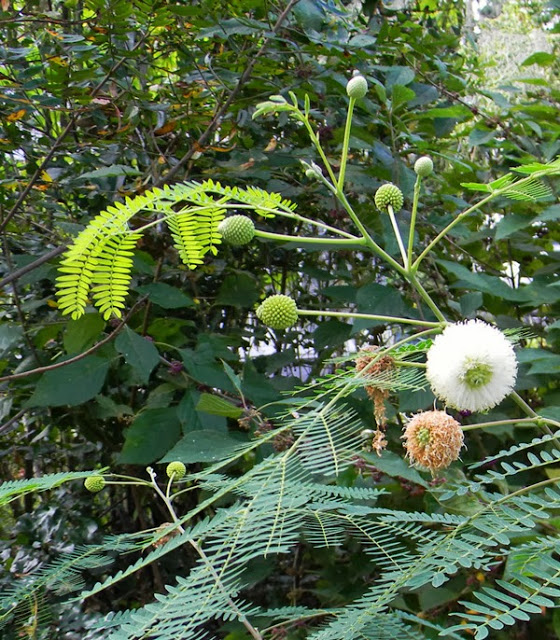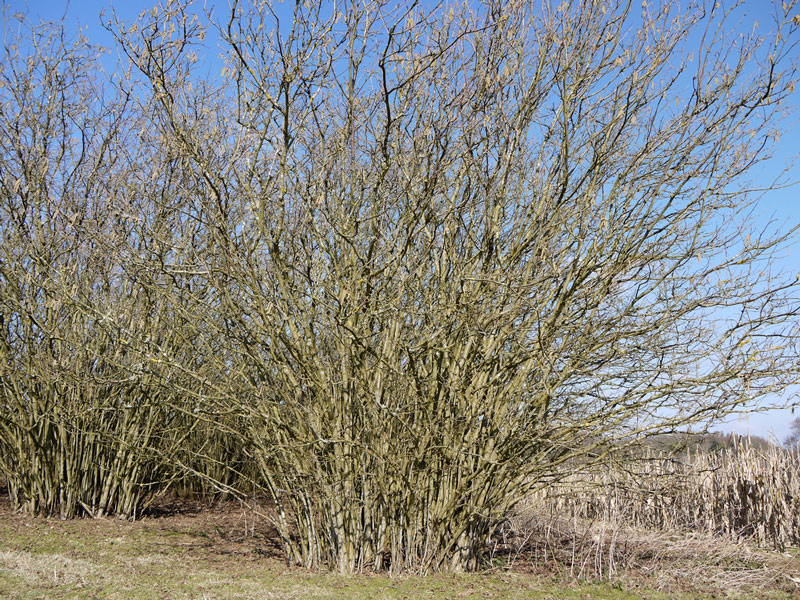Peter asks about identifying good coppicing trees:
“Are you aware of any specific things to be looking for in a tree type that indicates it’s suitability for coppicing?
I have been doing some research into firewood trees that can be coppiced and suit my region. I’m in a dry tropics area of northern Australia. (Oh no! I gave away my location! J) I think that the following may be suitable:
- Gliricidia
- Leucaena
- Calliandra
These are not natives and have potential to become weeds. That doesn’t completely rule them out in my mind but it is a consideration.
I have considered using a native Lilly Pilly (Syzygium) but can’t find any information on their suitability for firewood and coppicing. Not for native varieties that is. In the absence of information based on trials and experience, can anything be found in descriptions of trees that indicate suitability for cropping?
There’s no urgency or importance on this. I’m just interested planting a couple of (small) trees in my yard to try it out.
Thank you and God bless,”
I will answer in pieces. I am not a coppicing expert but I have picked up some good ideas over the years.
“Are you aware of any specific things to be looking for in a tree type that indicates it’s suitability for coppicing?”
First of all, let’s define coppicing.
Midwest Permaculture has a good article on the topic, writing:
“Coppicing a tree produces multiple stems growing out of the main trunk — suitable for firewood, fencing, tool handles, and many more woodland crafts. A properly coppiced woodland, harvested in rotational sections called coups, has trees and understory in every stage and is a highly effective method to grow a fast supply of naturally renewing timber. By working on a rotation we are assured of a crop somewhere in the woodland every year.
Pollarding (from the word “poll,” which originally meant “top of head”) has been used since the Middle Ages — in fact, there are still stands of continuously pollarded trees that date to that time. Today, it is a technique that can be used in very urban environments to prevent trees from invading utilities or sewers . . . but its historical use of a wooded pasture system also fits into a permaculture method very well — stacking functions to get more yield out of one area.
What makes these methods so appealing is that by keeping the tree in a perpetual juvenile state, they actually extend the life of the tree by hundreds or sometimes even thousands of years. Diseases rarely have time to take hold of the young growth and weather elements do not affect trees of short stature so they live much longer than their unpruned counterparts.”
Basically, you are cutting a tree down to the ground at the right time of the year in order to have it regrow and continually supply you with wood.
Good coppicing species are those which don’t bleed too much sap, have the ability to regrow, and have value for feeding animals, using for tools or firewood, etc.
If a tree is a weak softwood, it’s less valuable as a coppice tree, unless you’re just using it as a chop-and-drop, like I do with moringa trees.
A lot of the culture and practice of coppicing has been lost over the years.
“I have been doing some research into firewood trees that can be coppiced and suit my region. I’m in a dry tropics area of northern Australia. (Oh no! I gave away my location! J)”
Research is good, as is experience.
As for “giving away your location,” when you have roughly 100,000 people following you online and have received threats related to your family, it’s nice being off the map – or at least not easily found.
Gliricidia and Leucaena are both awesome for cutting and regrowing. I’ve seen them done as pollards but I’ll bet coppicing works well too. The regrowth rates are astonishing.

Leucaena leucocephala
Calliandra is an interesting choice. I hadn’t thought about that one as a coppice, but I do love them. I used to have a dwarf powderpuff tree in my yard which would freeze and come back. I’ll bet that works quite well.
“These are not natives and have potential to become weeds. That doesn’t completely rule them out in my mind but it is a consideration.”
Yes, good point. Unless they are already growing in your area, it’s probably best not to introduce them. Leucaena in particular. Gliricidia, if propagated all from the same tree, supposedly will not set seed because it needs a pollinator. Not sure about that, though, but I do see a lot of non-seeding ones in neighborhoods.
“I have considered using a native Lilly Pilly (Syzygium) but can’t find any information on their suitability for firewood and coppicing. Not for native varieties that is. In the absence of information based on trials and experience, can anything be found in descriptions of trees that indicate suitability for cropping?
There’s no urgency or importance on this. I’m just interested planting a couple of (small) trees in my yard to try it out.”
I haven’t grown Lilly Pilly before, but it’s not supposed to be a very big tree. It would likely take coppicing well, though, as its cousin the guava can be heavily cut and regrow rapidly.
You can fast-forward your experimentation process by asking a few local tree trimmers/arborists, “hey, what trees grow back like crazy from the stumps when you cut them?”
That might put you on the right path. But experimenting with a variety of trees will be a lot of fun. Go – do it! And report back if you remember. I would love to hear how your experiments turn out.
*Image at top courtesy Tristan Ferne, cc license



3 comments
Thanks for your post David. Very informative.
Your insights into coppicing bear out my own thoughts (and wishes).
I’ve been cutting down a youngish Tibouchina only to be pleasantly surprised by the extent of regrowth. I must’ve struck it lucky as there was no method in my process. I now have a log fire to feed so plant to harvest said plant and also to cut down alternating trees in my lilly pilly hedge. The leaves all go to mulching compost. I hear you about keeping personal details to a minimum in case what I do bothers others. Many thanks
That is excellent. You observed, and now you have something that works! Good job, Pamela.
Comments are closed.